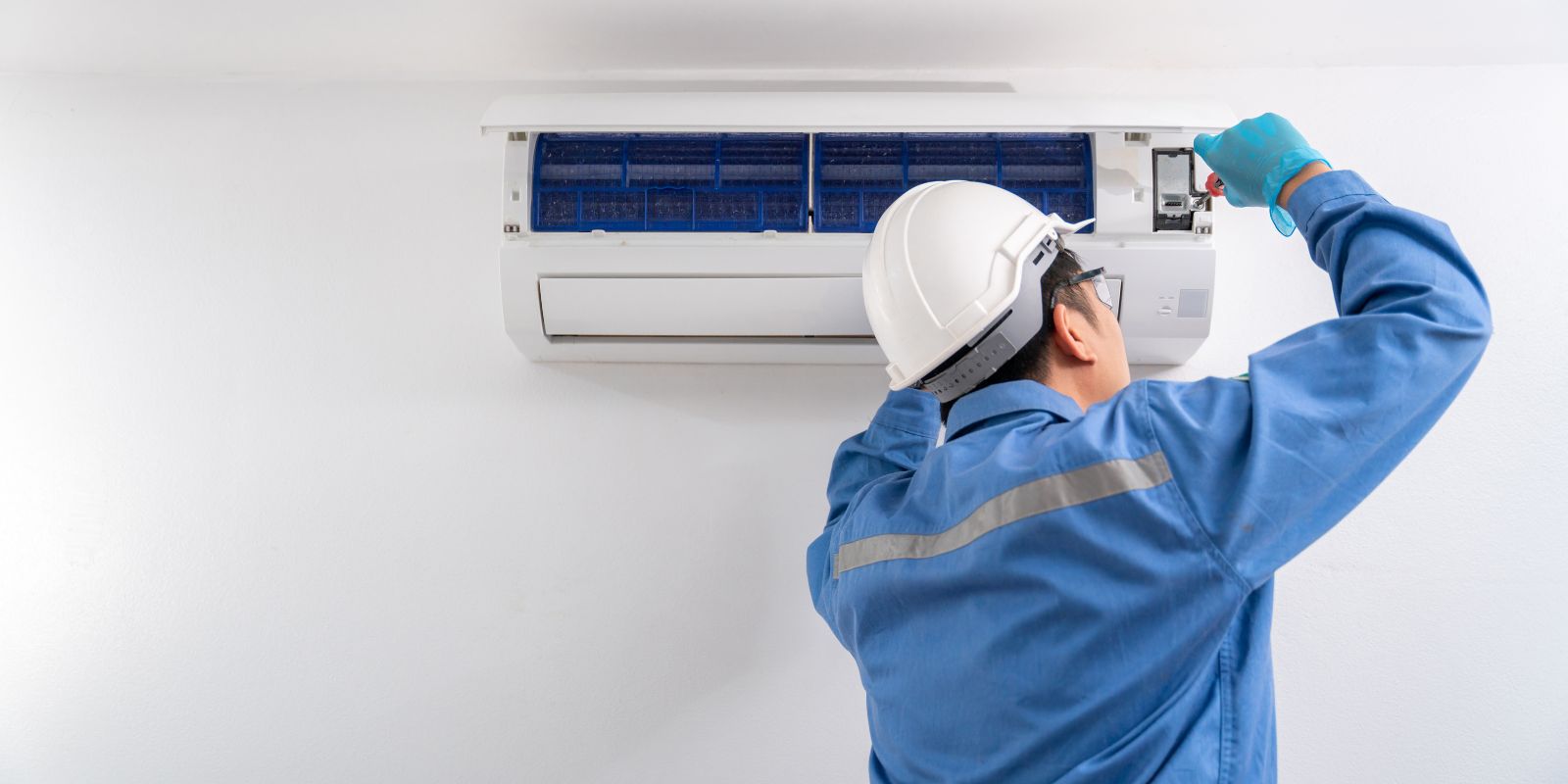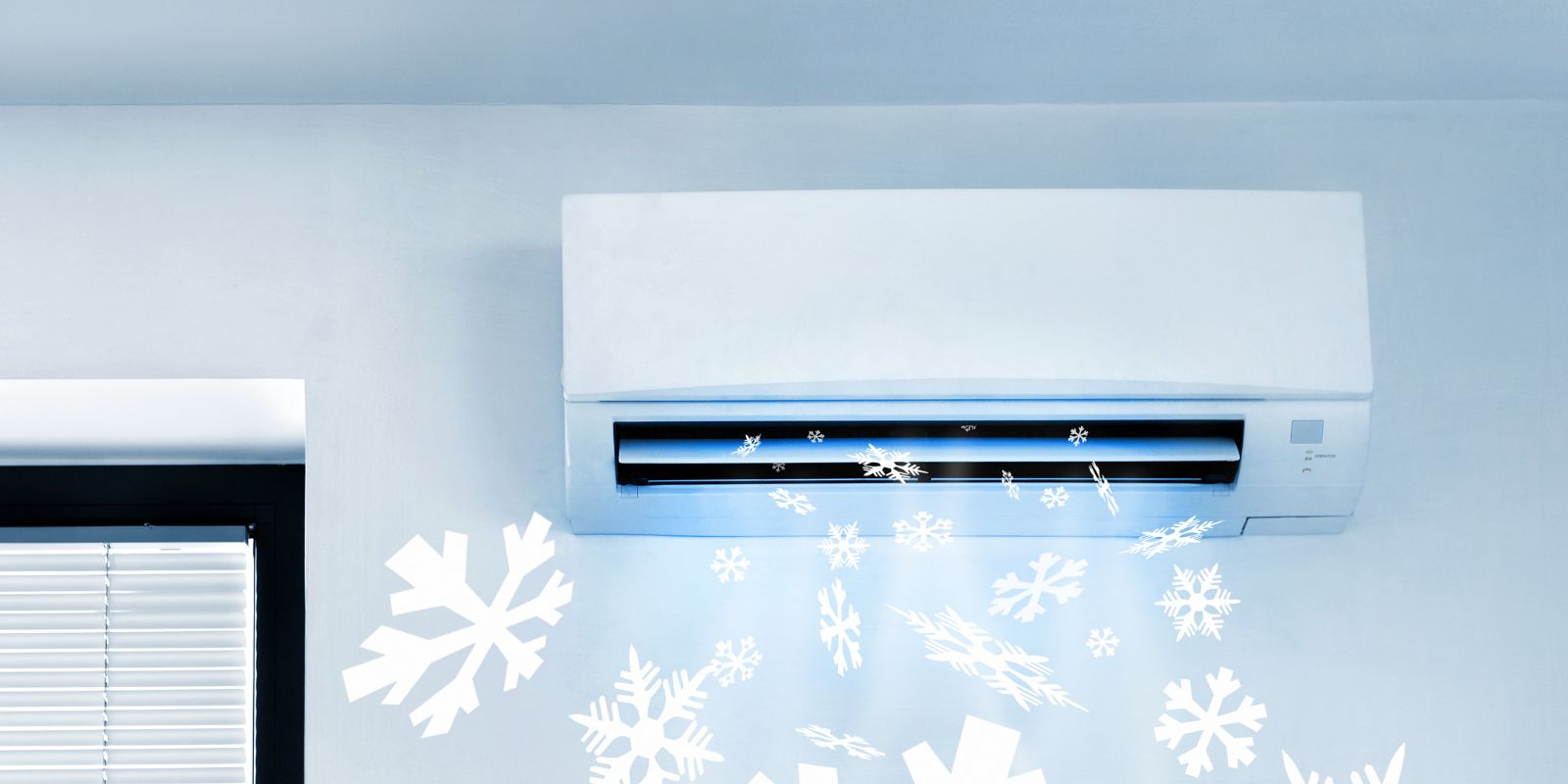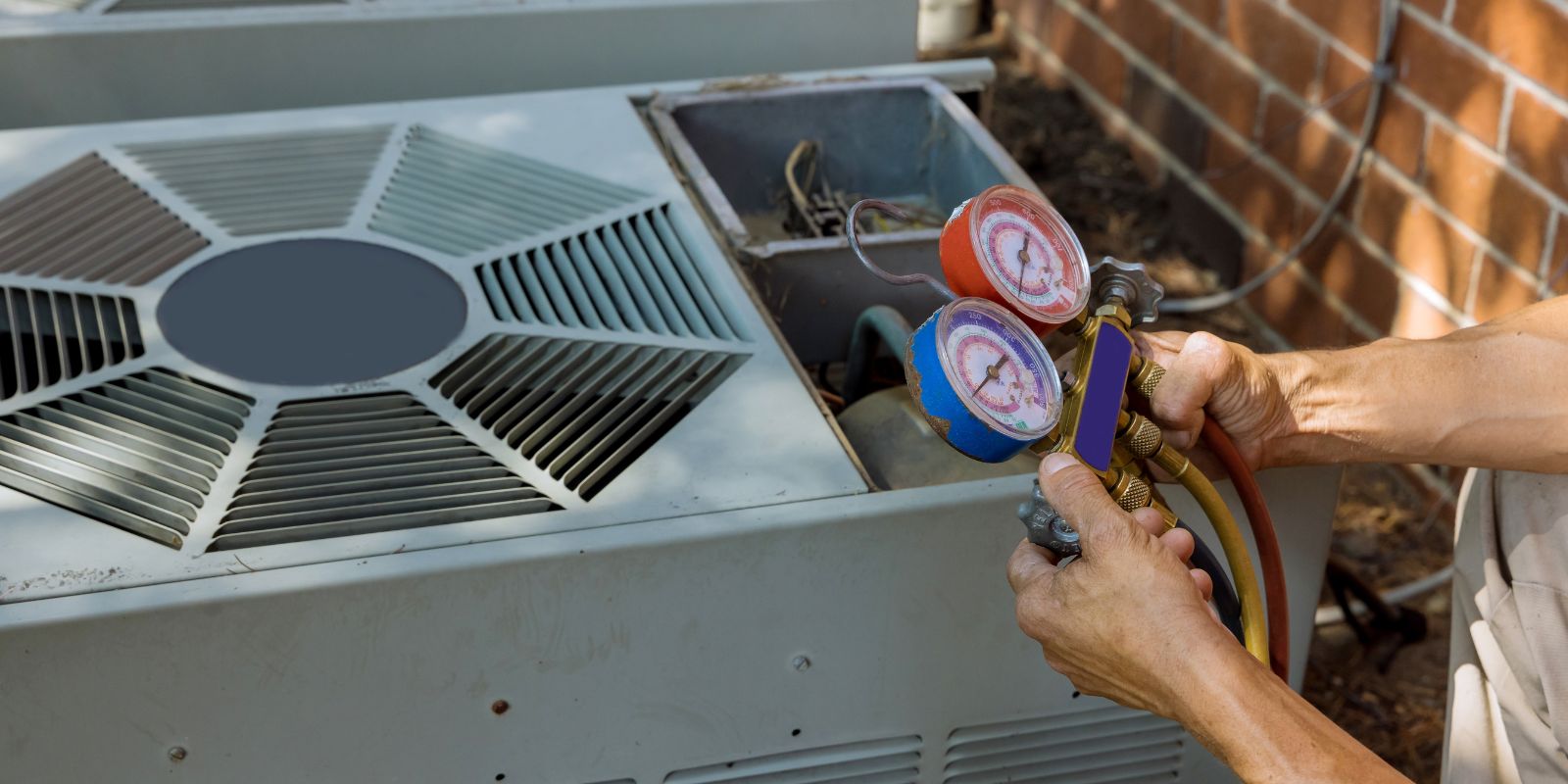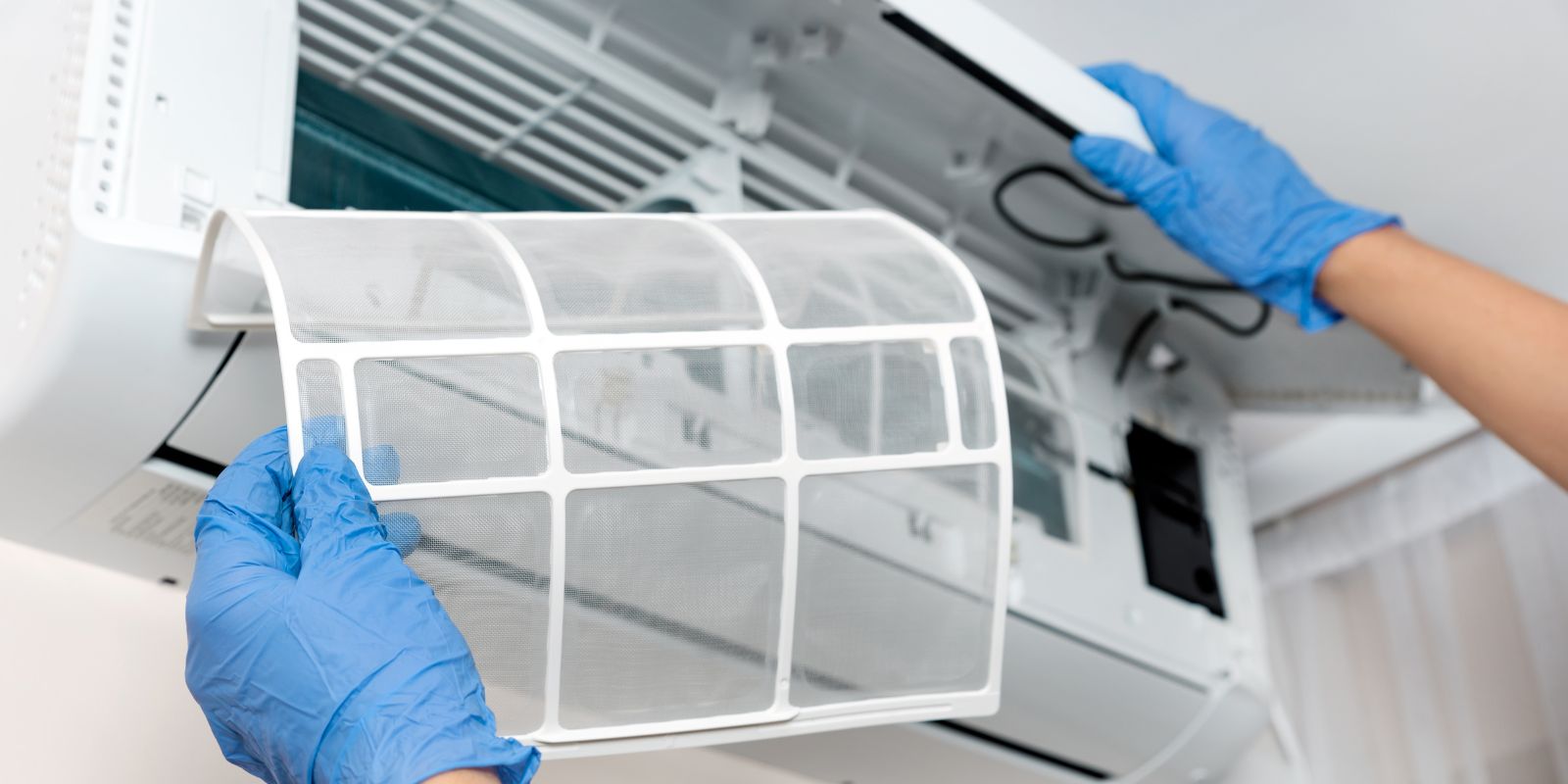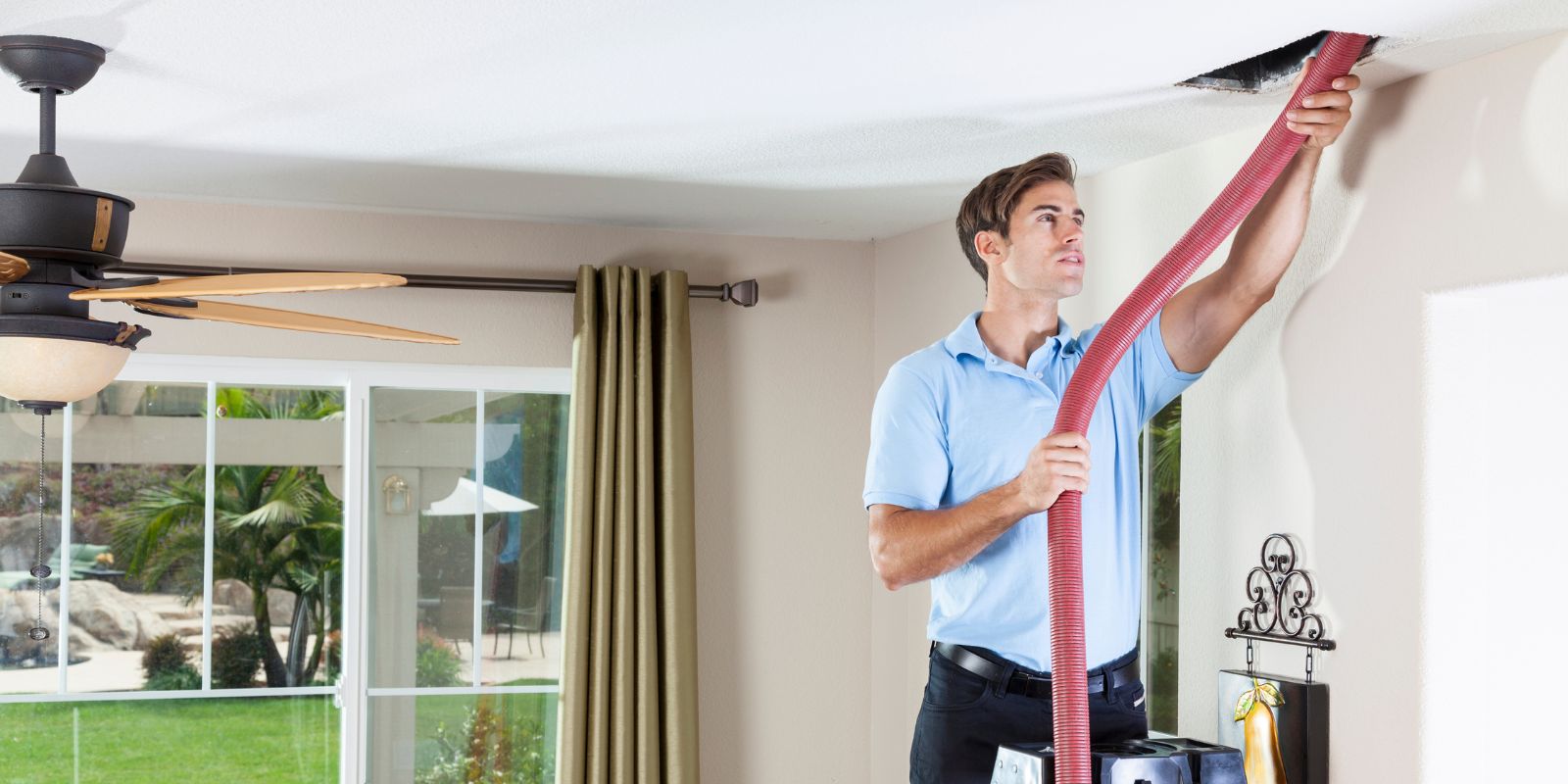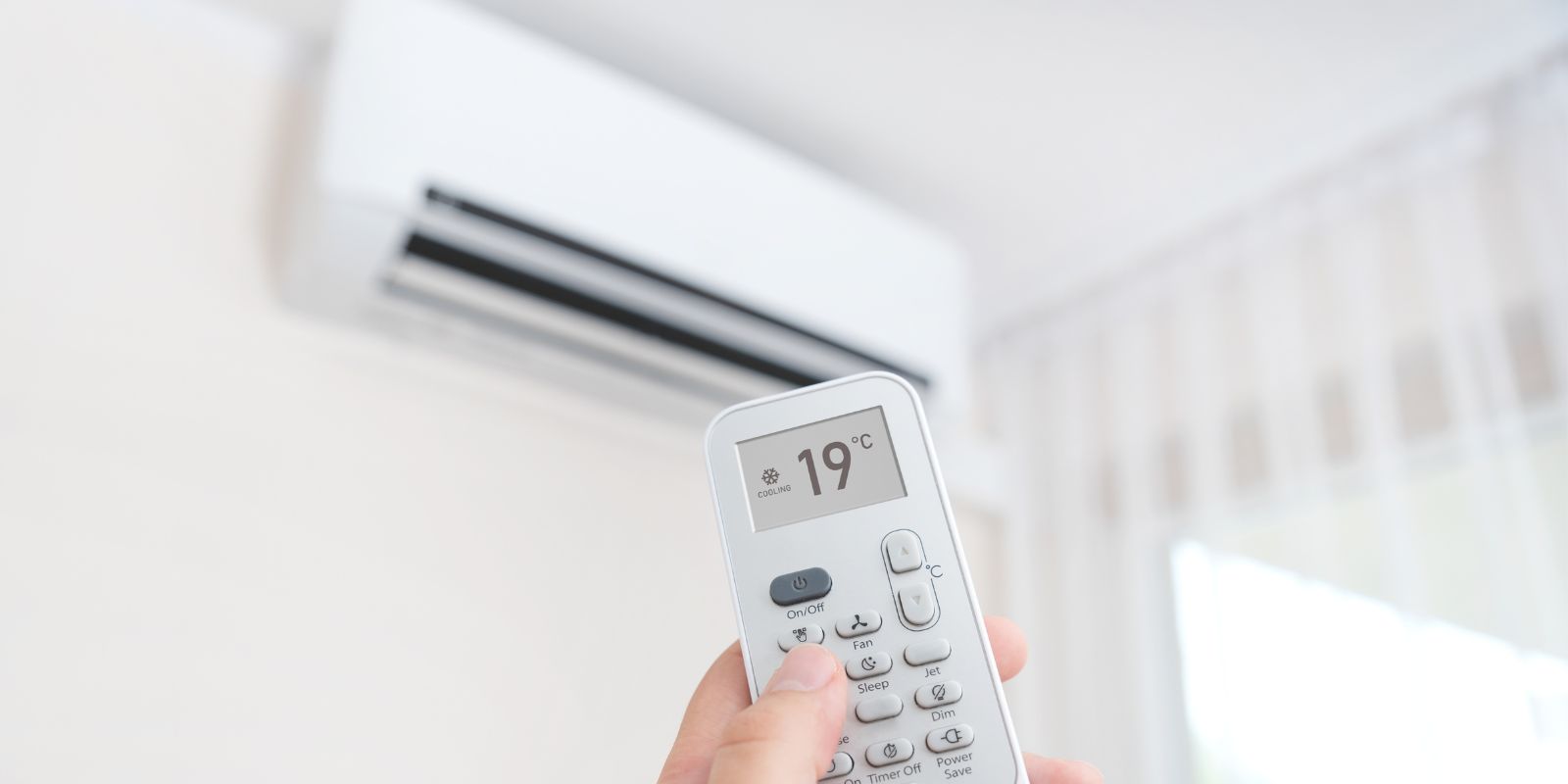Air Conditioning Systems
Table of Contents
- Air Conditioning Systems: Essential Guide for Homeowners
- Introduction to Air Conditioning Systems
- Types of Air Conditioning Systems
- Central Air Conditioning Systems
- Ductless, Mini
- Mini-Split Air Conditioners
- Window Air Conditioners
- Portable Air Conditioners
- Table 1: Comparison of Different Types of Air Conditioning Systems
- Selecting the Right Air Conditioning System
- Assessing Your Space and Needs
- Energy Efficiency Ratings Explained
- Features to Look For
- Installation and Maintenance
- Cost and Budget Considerations
- Technological Advancements in Air Conditioning
- Environmental Impact and Sustainability
- Common Problems and Troubleshooting
- Conclusion
- FAQs
- What is the Best Air Conditioning System for My Home?
- How Often Should I Service My Air Conditioning System?
- Can I Install an Air Conditioning System Myself?
- How Can I Make My Air Conditioning System More Energy Efficient?
- What Should I Do If My Air Conditioner Starts Leaking Water?
- How Long Do Air Conditioning Systems Typically Last?
- Is It Worth Investing in a Smart Air Conditioning System?
Air Conditioning Systems: Essential Guide for Homeowners
Key Takeaways
- Understanding Air Conditioning Varieties: Dive into the diverse world of air conditioning systems. From central units to portable models, grasp the unique features and ideal applications of each type, ensuring you make an informed decision tailored to your home’s needs.
- Energy Efficiency and Cost-Effectiveness: Unravel the mysteries of SEER and EER ratings. Learn how these metrics influence your utility bills and discover strategies to select an energy-efficient system that aligns with your budget and environmental values.
- Maintenance Mastery: Uncover essential tips for maintaining your air conditioning system. Regular upkeep not only prolongs the life of your unit but also ensures it runs at peak efficiency, providing you with comfort and cost savings.
- Innovative Features and Smart Technology: Step into the future with the latest advancements in air conditioning technology. Explore smart features that offer unprecedented control and convenience, enhancing your home’s comfort and energy management.
- Navigating Installation and Troubleshooting: Whether you’re considering a DIY approach or hiring a professional, understand the critical factors that influence the installation process. Plus, gain insights into common issues and troubleshooting techniques to keep your system running smoothly.
Introduction to Air Conditioning Systems
Air conditioning, a marvel of modern engineering, has transformed our living spaces, workplaces, and even the way we design our homes. It’s not just about comfort; it’s a technological advancement that has reshaped our world. Let’s take a brief journey through the history and significance of air conditioning systems.
The Evolution of Air Conditioning
The story of air conditioning begins in the early 20th century, but its roots can be traced back to ancient times when civilizations used various methods to keep cool. The modern air conditioner, as we know it, was invented in 1902 by Willis Carrier. Initially designed to control humidity in a printing plant, it soon became apparent that this invention had the potential to revolutionize indoor living.
Air Conditioning and Modern Living
Today, air conditioning systems do more than just cool the air. They play a pivotal role in filtering and purifying indoor air, contributing to healthier living environments.
They have become essential in regions with extreme climates, making areas previously unbearable in summer, like the deep South in the United States, habitable and thriving. In the workplace, air conditioning has been a game-changer, boosting productivity and creating comfortable working conditions.
The Impact on Architecture and Design
Interestingly, air conditioning has also influenced architectural design. Before its widespread adoption, buildings were designed with high ceilings, wide hallways, and large windows to facilitate natural cooling. Today, architects have more flexibility, allowing for varied designs and the use of materials that were previously unsuitable for hot climates.
A Necessity in Modern Times
In our current era, air conditioning is no longer a luxury but a necessity. It supports our lifestyle, health, and even the economy. As we continue to witness climate change and hotter temperatures, the role of air conditioning systems in our lives is set to become even more crucial.
In the following sections, we’ll explore the different types of air conditioning systems, how to choose the right one for your needs, and how to maintain them for optimal performance. Whether you’re a first-time buyer or looking to upgrade your current system, this guide will provide you with the essential knowledge to navigate the world of air conditioning.
Types of Air Conditioning Systems
Navigating the world of air conditioning systems can be like exploring a vast ocean of options. Each type of system offers unique features and benefits, making it suitable for different needs and spaces. Let’s dive into the main types of air conditioning systems available in the market.
Central Air Conditioning Systems
Central air conditioning systems are the heartbeats of whole-home cooling. They consist of a large compressor unit located outside and an indoor coil filled with refrigerant. These systems are ideal for cooling multiple rooms or an entire house. They work by circulating cool air through a system of supply and return ducts, offering a consistent temperature throughout the home. Central AC systems are particularly beneficial for large homes and those with existing ductwork.
Ductless, Mini
Mini-Split Air Conditioners
Ductless, mini-split systems are the ninjas of the air conditioning world – sleek, efficient, and unobtrusive. They are perfect for homes without ductwork or for cooling individual rooms. These systems consist of an outdoor compressor unit and one or more indoor air-handling units, connected by a small conduit. They offer the flexibility to control temperatures in each room independently, making them energy-efficient and cost-effective for targeted cooling.
Window Air Conditioners
Window air conditioners are the classic, compact solution for cooling single rooms. They are designed to fit in a window frame and are an excellent choice for renters or those looking for a temporary cooling solution. These units are relatively easy to install and can be a budget-friendly option. However, they might not be as efficient as other systems for larger spaces.
Portable Air Conditioners
For those who seek mobility and convenience, portable air conditioners are the way to go. These freestanding units can be moved from room to room and only require access to a window for the exhaust hose. Portable air conditioners are ideal for spaces where traditional AC systems are impractical or for temporary cooling needs. While they offer flexibility, it’s important to note that they may not be as efficient as other types of air conditioners and are best suited for smaller areas.
Each of these systems has its unique advantages and considerations. The choice depends on factors like the size of the space you need to cool, whether you have existing ductwork, your budget, and personal preferences. In the next sections, we’ll delve deeper into how to select the right air conditioning system for your needs, installation considerations, and how to maintain your system for peak performance.
Table 1: Comparison of Different Types of Air Conditioning Systems
| Feature | Central Air Conditioning | Ductless Mini-Split | Window AC | Portable AC |
| Coverage | Whole house | Individual rooms or zones | Single room | Single room |
| Installation | Professional; requires ductwork | Professional; no ductwork needed | DIY; window-mounted | DIY; mobile with exhaust hose |
| Cost | High | Moderate to High | Low to Moderate | Low to Moderate |
| Energy Efficiency | High (especially newer models) | High | Moderate | Moderate |
| Noise Level | Low | Low to Moderate | Moderate | Moderate to High |
| Aesthetic Impact | Minimal (hidden ducts and vents) | Minimal (small indoor units) | Visible in window | Visible floor unit |
| Best Use | Consistent cooling for large spaces | Targeted cooling without ducts | Affordable option for small spaces | Flexible cooling solution |
Selecting the Right Air Conditioning System
Choosing the right air conditioning system is a crucial decision that can impact your home’s comfort and your wallet. It’s not just about picking any unit but finding the one that fits your specific needs. Here’s how to navigate this important choice.
Assessing Your Space and Needs
Before diving into the sea of options, take a step back and assess your space. Consider the size of the area you need to cool, the layout of your home, and your climate. A system that’s too small won’t cool effectively, while one that’s too large can lead to increased humidity and energy waste. Consulting with a professional can help you determine the right size and type of system for your home.
Energy Efficiency Ratings Explained
Energy efficiency is a key factor in choosing an air conditioning system. Look for the Seasonal Energy Efficiency Ratio (SEER) and Energy Efficiency Ratio (EER) ratings. A higher SEER or EER rating means more energy efficiency and lower utility bills. While systems with higher ratings might have a higher upfront cost, they can offer significant savings in the long run.
Features to Look For
Modern air conditioners come with a variety of features. Consider options like programmable thermostats, which allow you to set schedules for cooling, or units with variable speed motors that adjust cooling output to maintain consistent temperatures. Also, look for features that improve air quality, such as built-in air purifiers or dehumidifiers.
Selecting the right air conditioning system involves balancing your needs, the specifics of your living space, and your budget. In the following sections, we’ll explore the installation process, maintenance tips, and how to get the most out of your air conditioning system.
Installation and Maintenance
Proper installation and regular maintenance are key to ensuring that your air conditioning system operates efficiently and has a long lifespan. Here’s what you need to know about setting up your new system and keeping it in top shape.
Video: Installation Guide
Professional Installation vs. DIY
When it comes to installing an air conditioning system, the question often arises: should you do it yourself or hire a professional? While DIY installation can be tempting, especially to save costs, air conditioning systems are complex and require precise installation. Incorrect installation can lead to inefficiency, increased energy costs, and even system failure. For most types, especially central and ductless systems, professional installation is recommended to ensure optimal performance and adherence to safety standards.
Routine Maintenance Tips
Regular maintenance is crucial for the efficiency and longevity of your air conditioning system. Here are some key maintenance tips:
- Regular Filter Changes: One of the simplest yet most effective maintenance tasks is changing or cleaning the air filters. Dirty filters restrict airflow and reduce efficiency. Depending on your system and usage, filters should be changed or cleaned every 1-3 months.
- Annual Professional Check-ups: Schedule an annual service with a qualified technician. They can check the system’s refrigerant levels, test for leaks, inspect electrical components, and ensure the system is operating efficiently.
- Cleaning Coils and Fins: The evaporator and condenser coils can accumulate dirt over time, reducing the system’s ability to absorb and release heat. Regularly cleaning these components can prevent efficiency losses.
- Ensuring Adequate Airflow: Keep the area around outdoor units clear of debris and foliage to ensure adequate airflow. For indoor units, ensure vents are not blocked by furniture or curtains.
By following these installation and maintenance guidelines, you can enjoy a comfortable indoor environment, avoid unexpected breakdowns, and save money on energy bills.
Video: Air Conditioner Maintenance Tips
Cost and Budget Considerations
When it comes to air conditioning systems, understanding the financial aspects is as crucial as knowing the technical details. The cost of an air conditioning system encompasses more than just the purchase price; it includes installation, operation, maintenance, and potential energy savings. Let’s break down these cost elements to help you make a budget-friendly decision.
Initial Investment vs. Long-Term Savings
The initial cost of an air conditioning system varies widely based on the type of system, its capacity, and features. While a higher-end model with advanced features may have a steeper upfront cost, it can lead to significant energy savings over time. It’s important to consider the long-term operational costs when making your decision. Energy-efficient models, though more expensive initially, can reduce your monthly utility bills, offering savings in the long run.
Finding Cost-Effective Solutions
To find the most cost-effective solution:
- Compare Different Models: Look at various models within your budget range and compare their SEER and EER ratings. A higher-rated model might be more expensive upfront but can save you money in the long term.
- Consider Rebates and Incentives: Check for any available rebates, tax credits, or incentives for installing energy-efficient systems. These can significantly reduce the overall cost.
- Evaluate Financing Options: Some companies offer financing plans for air conditioning systems, allowing you to spread the cost over time.
- Maintenance Costs: Factor in the cost of regular maintenance, including professional servicing and replacement parts like filters.
By carefully considering these cost and budget factors, you can choose an air conditioning system that not only meets your cooling needs but also aligns with your financial situation.
Table 2: Cost vs. Efficiency of Various AC Systems
| Air Conditioning Type | Average Initial Cost | Average SEER Rating | Estimated Annual Operating Cost |
| Central Air Conditioning | $3,500 – $7,500 | 16-23 | $300 – $500 |
| Ductless Mini-Split | $2,000 – $14,500 (depending on number of zones) | 15-22 | $250 – $450 |
| Window AC | $150 – $500 | 10-15 | $50 – $150 |
| Portable AC | $250 – $700 | 8-12 | $75 – $200 |
*Note: The costs and efficiency ratings are approximate and can vary based on brand, model, and region. The estimated annual operating cost depends on usage patterns, electricity rates, and the specific efficiency of the unit.*
Technological Advancements in Air Conditioning
The air conditioning industry has witnessed remarkable technological advancements in recent years, revolutionizing how we cool our homes and businesses. These innovations not only enhance comfort and convenience but also aim to improve energy efficiency and reduce environmental impact. Let’s explore some of the cutting-edge developments in air conditioning technology.
Smart Air Conditioning Systems
One of the most significant advancements is the integration of smart technology into air conditioning systems. Smart ACs can be controlled remotely via smartphones or voice assistants, allowing users to adjust settings from anywhere. These systems can learn your preferences and schedule, automatically adjusting to optimize comfort and efficiency. Some even provide maintenance alerts and energy usage reports, helping you monitor and reduce your carbon footprint.
Eco-Friendly Refrigerants
The shift towards eco-friendly refrigerants is a response to environmental concerns associated with traditional refrigerants. Newer models are now using refrigerants with lower global warming potential (GWP), reducing the impact on the ozone layer and contributing to a healthier planet.
Variable Speed Technology
Variable speed technology in compressors and fans allows the system to adjust cooling output precisely, providing more consistent temperatures and reducing energy consumption. This technology leads to quieter operation, enhanced comfort, and lower utility bills.
Advanced Air Filtration Systems
Modern air conditioners are equipped with advanced air filtration systems that not only cool the air but also improve indoor air quality. These systems can effectively filter out pollutants, allergens, and bacteria, ensuring a healthier living environment.
These technological advancements in air conditioning systems are not just about staying cool; they’re about doing it smarter, more efficiently, and in a way that’s more in tune with our environment. As technology continues to evolve, we can expect even more innovative solutions in the world of air conditioning.
Environmental Impact and Sustainability
In the realm of air conditioning, the conversation around environmental impact and sustainability is increasingly vital. As global temperatures rise and air conditioning becomes more widespread, the focus on eco-friendly practices and sustainable solutions in cooling technology has intensified. Let’s delve into how air conditioning systems affect the environment and the strides being made toward sustainability.
The Carbon Footprint of Air Conditioning
Air conditioning systems, particularly older and less efficient models, can have a significant carbon footprint. They consume a considerable amount of electricity, much of which is generated from fossil fuels. This energy consumption contributes to greenhouse gas emissions, exacerbating global warming. The use of certain refrigerants in AC systems also poses environmental concerns due to their high global warming potential (GWP).
Advancements in Eco-Friendly Cooling
Thankfully, the industry is making strides in developing more sustainable air conditioning solutions. Here are some key advancements:
- Energy-Efficient Models: Modern air conditioners are designed to consume less energy while providing the same level of cooling. The adoption of high-efficiency units significantly reduces greenhouse gas emissions.
- Green Refrigerants: The shift towards refrigerants with lower GWP is a crucial step in reducing the environmental impact of air conditioning systems. These new refrigerants are less harmful to the ozone layer and contribute less to global warming.
- Solar-Powered Air Conditioning: Solar-powered AC systems represent a significant leap towards sustainability. By harnessing solar energy, these systems reduce reliance on fossil fuels and offer a renewable and clean energy source for cooling.
- Building Design Integration: Architects and builders are increasingly incorporating passive cooling techniques and energy-efficient designs to reduce the need for mechanical air conditioning. This approach includes better insulation, strategic window placement, and natural ventilation.
The Role of Consumers
Consumers play a crucial role in driving the demand for sustainable air conditioning solutions. By choosing energy-efficient models, properly maintaining systems, and being mindful of usage, individuals can contribute to a more sustainable future.
The journey towards environmentally friendly air conditioning is ongoing. With continued innovation and responsible usage, we can enjoy the benefits of cooling technology while minimizing its impact on our planet.
Video: Types of Air Conditioner
Common Problems and Troubleshooting
Even the best air conditioning systems can encounter issues. Being aware of common problems and knowing how to troubleshoot them can save you time, money, and discomfort. Here’s a guide to some typical air conditioning issues and tips on how to address them.
The AC Isn’t Cooling Properly
One of the most frequent complaints is that the air conditioner isn’t cooling effectively. This issue can stem from various causes:
- Dirty Air Filters: Clogged filters restrict airflow, reducing efficiency. Regularly cleaning or replacing the filters can resolve this issue.
- Low Refrigerant Levels: If your AC is low on refrigerant, it won’t cool effectively. This could be due to leaks, which need professional repair.
- Thermostat Issues: Sometimes, the problem is as simple as incorrect thermostat settings. Ensure it’s set to cooling mode and the temperature is lower than the room’s current temperature.
Unusual Noises from the AC Unit
Strange noises from your air conditioner can indicate problems:
- Banging or Clanking Sounds: These noises might suggest a loose or broken part inside the AC unit, such as the compressor or fan blades.
- Whistling or Hissing Sounds: These could be signs of a refrigerant leak or ductwork issues.
AC Unit Turning On and Off Frequently
This problem, known as short cycling, can be caused by:
- Oversized AC Unit: If the unit is too large for the space, it can cool the area too quickly and shut off prematurely.
- Dirty Evaporator Coils: Coils covered in dirt or grime can hinder the cooling process, causing the system to turn on and off more often than it should.
Water Leaks Around the AC Unit
Water leaks can occur due to:
- Clogged Drain Line: The line that drains condensation from the AC can become clogged, leading to water leakage.
- Frozen Evaporator Coils: Low refrigerant levels or airflow issues can cause the coils to freeze, resulting in water leakage when they thaw.
AC Not Turning On
If your AC won’t turn on, check the following:
- Circuit Breaker: Ensure the AC unit’s circuit breaker hasn’t tripped. If it has, reset it and see if the AC starts working.
- Thermostat Batteries: Dead batteries in a thermostat can prevent the AC from turning on. Replace the batteries to see if this resolves the issue.
- Power Supply: Ensure the AC unit is properly plugged in and that there’s no issue with the power supply.
Preventative Measures and When to Call a Professional
While some issues can be resolved with simple fixes, others require professional attention. Regular maintenance, such as cleaning filters and inspecting components, can prevent many common problems. However, if you encounter complex issues like refrigerant leaks, electrical faults, or anything that involves opening the AC unit, it’s best to call a qualified technician. DIY repairs on complex issues can be dangerous and might lead to more significant problems or void your warranty.
Understanding these common problems and troubleshooting steps can help you quickly identify and address issues with your air conditioning system, ensuring it runs efficiently and effectively.
Conclusion
Navigating the world of air conditioning systems can be a complex journey, but it’s a crucial one for ensuring comfort in our homes and workplaces. From understanding the different types of systems available to selecting the right one for
your needs, maintaining it for optimal performance, and being mindful of its environmental impact, each aspect plays a significant role in your overall experience with air conditioning.
Remember, the key to a successful air conditioning experience lies in balancing your immediate comfort needs with long-term considerations like energy efficiency, cost, and sustainability. Whether
you opt for a central system, a ductless mini-split, a window unit, or a portable air conditioner, the right choice depends on your specific situation. Consider factors like the size of your space, your budget, and your environmental preferences.
Regular maintenance, understanding common troubleshooting issues, and staying informed about the latest advancements in air conditioning technology will help you make the most of your investment. And as we continue to witness technological innovations and a growing emphasis on sustainability, the future of air conditioning looks promising, with smarter, more efficient, and eco-friendly systems on the horizon.
In conclusion, while the array of options and considerations might seem daunting at first, a well-informed approach to selecting and maintaining your air conditioning system can lead to years of comfortable, efficient, and responsible cooling. Stay cool, and remember that the right air conditioning system can be a game-changer for your living or working environment.
FAQs
In this section, we address some of the most frequently asked questions about air conditioning systems. These answers aim to provide quick, helpful insights into common queries and concerns.
What is the Best Air Conditioning System for My Home?
The “best” system depends on several factors, including the size of your home, your climate, budget, and personal preferences. For larger homes with existing ductwork, central air conditioning might be the most efficient. For smaller spaces or homes without ducts, ductless mini-splits or portable units could be more suitable.
How Often Should I Service My Air Conditioning System?
It’s recommended to have your air conditioning system professionally serviced at least once a year. This ensures it’s running efficiently and can help prevent future problems. Regular maintenance tasks like changing air filters should
be done more frequently, typically every 1-3 months, depending on usage and environmental factors.
Can I Install an Air Conditioning System Myself?
While some smaller units like window air conditioners can be installed by homeowners, larger systems like central and ductless mini-split air conditioners should be installed by professionals. Improper installation can lead to inefficiency, increased energy costs, and potential safety hazards.
How Can I Make My Air Conditioning System More Energy Efficient?
To improve energy efficiency, ensure regular maintenance, such as cleaning or replacing filters and servicing the unit annually. Consider upgrading to a high-efficiency model, using programmable thermostats, and optimizing your home’s insulation and ventilation to reduce the workload on your AC system.
What Should I Do If My Air Conditioner Starts Leaking Water?
First, check if the condensate drain line is clogged and clean it if necessary. If the problem persists, it could be due to a refrigerant leak or a frozen evaporator coil, which would require professional attention.
How Long Do Air Conditioning Systems Typically Last?
The lifespan of an air conditioning system varies based on the type, usage, and how well it’s maintained. On average, a well-maintained air conditioner can last between 15 to 20 years. Regular maintenance and timely repairs can significantly extend the life of your system.
Is It Worth Investing in a Smart Air Conditioning System?
Smart air conditioners offer convenience and improved energy efficiency. They allow remote control, can adapt to your schedule, and provide usage data to help optimize performance. If these features align with your lifestyle and you’re interested in potential energy savings, a smart AC system could be a worthwhile investment.
These FAQs cover the basics, but every situation is unique. For specific concerns or advice tailored to your individual needs, consulting with a professional is always recommended.
